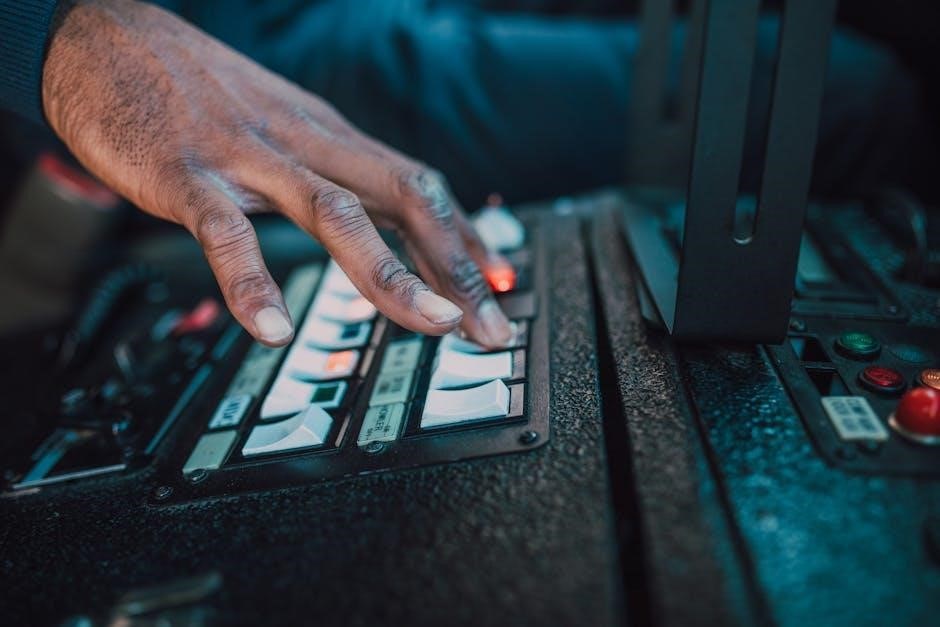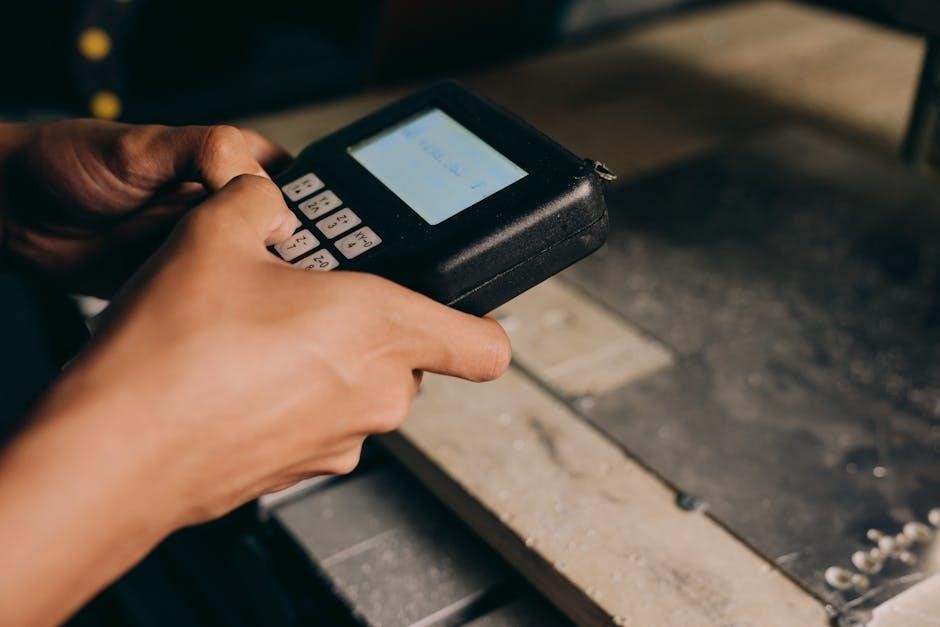The Boss RC-300 user manual provides comprehensive instructions for users to maximize the potential of this powerful device with informative guides and tutorials, available for download as a PDF file from the official website or other online sources easily.
Overview of the Boss RC-300 Loop Station
The Boss RC-300 Loop Station is a powerful and versatile music pedal that offers a wide range of features and capabilities, making it an ideal tool for musicians and music producers. With its advanced looping technology, the RC-300 allows users to create complex and layered soundscapes, and its intuitive interface makes it easy to use and navigate. The RC-300 also features a high-quality audio engine, with a bit rate of 16 bit and a sample rate of 44.1 kHz, ensuring that users can capture and play back their music with clarity and precision. Additionally, the RC-300 has a large storage capacity, allowing users to store and recall their loops and phrases with ease. The RC-300 is also highly customizable, with a range of options and settings that allow users to tailor the pedal to their specific needs and preferences. Overall, the Boss RC-300 Loop Station is a powerful and flexible tool that is capable of meeting the needs of a wide range of musicians and music producers. The RC-300 is a great choice for anyone looking to add depth and complexity to their music.

Key Features of the Boss RC-300
The Boss RC-300 features three stereo tracks, 99 onboard memories, and 16-bit/44.1kHz audio quality, making it a powerful tool for musicians and music producers to create complex soundscapes and loops with ease and precision always.
Technical Specifications of the Boss RC-300
The Boss RC-300 has a range of technical specifications that make it a powerful tool for musicians and music producers. The device has a bit rate of 16 bit and an output impedance of 2000 Ω, which ensures high-quality sound output. The sample rate of the Boss RC-300 is 44.1 kHz, providing clear and crisp audio playback. The device also has 83 built-in rhythms and a wide range of effects, including distortion, delay, and reverb. In terms of connectivity, the Boss RC-300 has a range of options, including MIDI in and out, USB, and auxiliary inputs. The device is also compatible with a range of accessories, including footswitches and expression pedals. The Boss RC-300 is powered by a DC 9V adapter and has a current draw of 310 mA. The device weighs 2.9 kg and has dimensions of 242 x 171 x 78 mm, making it easy to transport and store. Overall, the technical specifications of the Boss RC-300 make it a versatile and powerful tool for musicians and music producers. The device’s range of features and connectivity options make it an ideal choice for a range of applications, from live performance to studio recording.

Setting Up the Boss RC-300

Setting up the Boss RC-300 involves connecting the device to a power source and configuring the settings using the control panel and menu options easily and quickly with the user manual guide online.
Connecting the Boss RC-300 to Other Devices
The Boss RC-300 can be connected to a variety of devices, including guitars, basses, and other musical instruments, as well as audio equipment such as mixers and recording devices. To connect the RC-300 to another device, users can use the stereo input jacks or the MIDI interface. The RC-300 also features a USB port, which allows users to connect the device to a computer and transfer audio files or update the device’s firmware. When connecting the RC-300 to other devices, it is important to follow the correct procedures to ensure proper functionality and to avoid damaging the device or other equipment. The user manual provides detailed instructions on how to connect the RC-300 to other devices, including diagrams and illustrations to help guide the user through the process. By following these instructions, users can easily connect the RC-300 to a variety of devices and start creating and performing music with ease. The RC-300 is a versatile device that can be used in a variety of musical applications, from live performances to studio recordings. With its advanced features and connectivity options, the RC-300 is an ideal choice for musicians who want to take their music to the next level.

Troubleshooting the Boss RC-300
The Boss RC-300 user manual includes a troubleshooting section to help users resolve common issues and errors with the device, including audio problems and connectivity issues easily and quickly with step guides.
Common Issues and Solutions
The Boss RC-300 user manual provides solutions to common issues that users may encounter while using the device. One of the most common issues is audio distortion, which can be resolved by checking the input levels and adjusting them accordingly. Another issue is connectivity problems, which can be solved by restarting the device or checking the MIDI settings. The manual also provides troubleshooting guides for issues such as looping problems, pedal issues, and display errors. Additionally, the manual includes a section on maintenance and repair, which provides instructions on how to clean and service the device. By following the troubleshooting guides and maintenance instructions, users can resolve common issues and ensure that their Boss RC-300 is working properly. The manual is available for download as a PDF file from the official website or other online sources, making it easily accessible to users. Overall, the Boss RC-300 user manual is a comprehensive resource that provides solutions to common issues and helps users to get the most out of their device. With its clear instructions and troubleshooting guides, the manual is an essential tool for any Boss RC-300 user.
